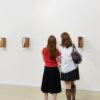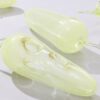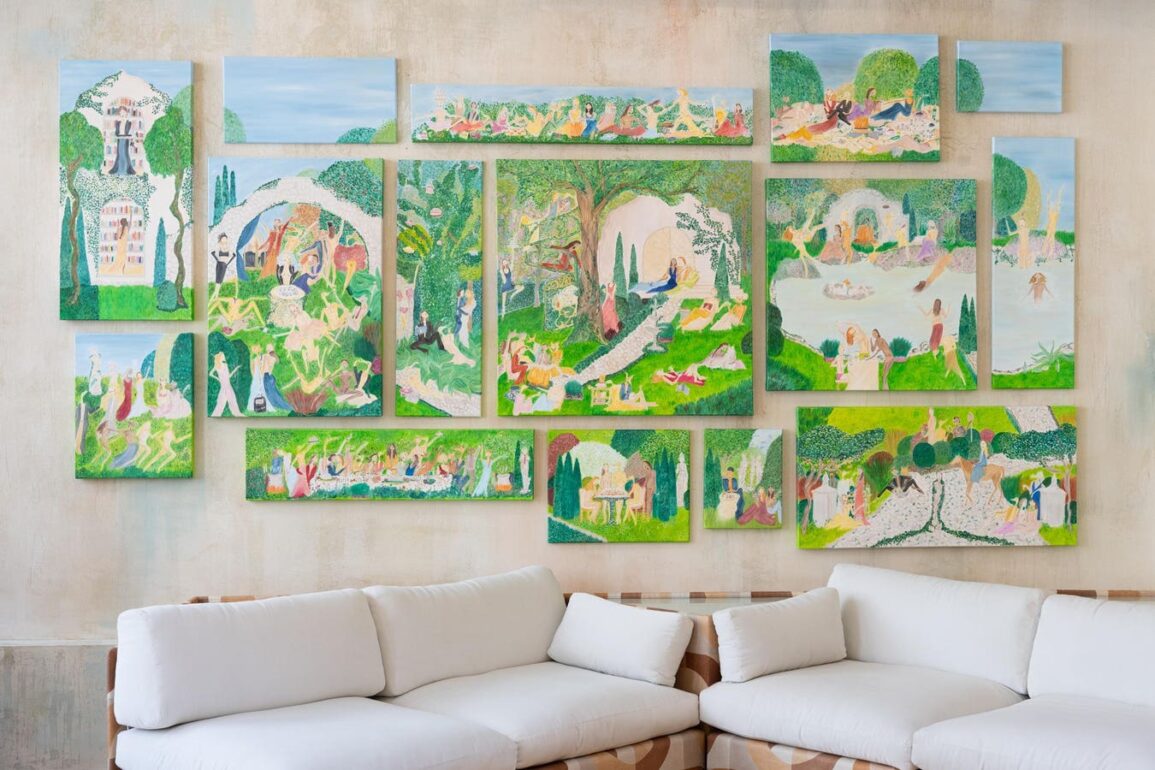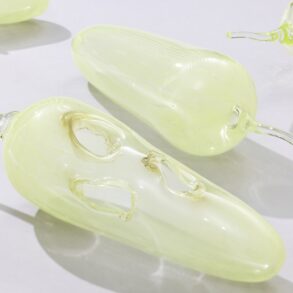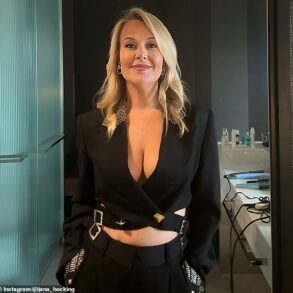
Step into the salon for cultural conversations and art aplenty.
However, this isn’t the salon of 15th century Italy but is instead in 21st century New York City, nestled between busy SoHo storefronts in a third-floor walk-up.
Salon 21, founded by Alex Bass, is a space that showcases a rotation of art as well as a host of events that celebrate community, culture and accessible art.
This month, just in time for Breast Cancer Awareness Month and in the midst of a very important election cycle for women’s rights, the space is dedicating itself to women’s art, health and advocacy.
The current activation on display in the expertly decorated space is “The Mysteries That Were Ours,” by artist Danielle Kosann. On Oct. 23, the salon will play host to a panel event, featuring Kosann, as well as Abigail DeAtley from Planned Parenthood, Esther Tran-Le of MyAdvo and Hall W. Rockefeller of Less Than Half.
Paintings by Danielle Kosann, hung at Salon 21
Colin Savercool
“This discussion aligns with our exhibition, ‘The Mysteries That Were Ours,’ which showcases Kosann’s work exploring women’s transformative journeys through intricate narratives filled with humor and satire,” said Bass, who will also be moderating the panel. “These pieces challenge societal taboos and redefine female gathering spaces as empowering expressions of identity. This panel will delve into women’s health and reproductive rights, addressing pressing issues highlighted by today’s political climate. We will also explore the intersections of women’s rights within the art and design community.”
Proceeds from the event and a portion of exhibition sales will go directly to Planned Parenthood of Greater New York, and the paintings will remain in the gallery before and after the panel.
Art and women’s rights advocacy
Chuck Schumer and Letitia James with Rob Pruitt’s installation at the Planned Parenthood of Greater New York 2023 Gala
Madison McGaw/BFA.com
Art, in all forms, has been a vehicle for social change forever. Social justice groups and individuals use their art to advocate for reform and change, but are also the ones who need that change for themselves.
“It feels important to mention that artists—especially young artists, women artists, people of color artists— often do a lot to raise awareness, to fight for justice for all, while often carrying the burdens of the systems they are fighting against,” said Abigail DeAtley, Vice President of individual giving and events at Planned Parenthood of Greater New York.
“So while I am in awe of artists that fight for reproductive justice, economic justice and racial justice, I also want to make sure we are putting the same pressure on our elected officials, on art collectors, museum boards and others who hold power and can make change with their decisions and resources.”
Colin Savercool
To help make this happen, Hall Rockefeller takes a look through the lens of art collection and museum curations.
According to the site, only 15% of museum collections in the U.S. are by women artists and a measly 3% of art sold at auctions are by women. Rockefeller’s mission is to expose the vast and beautiful world of women-made art to the masses and encourage collectors, both male and female, to invest in women-made pieces.
“We need to have autonomy and influence over the things in our world in order to feel secure within it,” said Rockefeller. “Making art, looking at art, or curating it in our homes is a way to connect to the creative forces of the world without being overwhelmed by them. When we learn those essential skills, we feel more autonomy over our bodies and can advocate for ourselves.”
Hall Rockefeller, founder of Less Than Half, advocates for women’s representation in museums, curations and art ownership.
lessthanhalf.org
Rockefeller not only acknowledges the importance of women in art, but women-made art and women-owned art as crucial steps toward equality and a reclamation of power. Calling it “matronage,” Hall encourages others to support women artists during all stages of their lives, good and bad.
“True matrons of the arts don’t simply buy the work of women artists, but they also lend support in whatever way they can during difficult times for the artists they collect— sometimes that can mean buying work when an artist is a new mother, or other times buying work and offering support during health crises.”
Art and female health
Seraphina DeVere and Fashion LaBeija interacting with Judy Chicago’s work “What if Women Ruled the World” in 2024.
Deonté Lee/BFA.com
While yes, there are many depictions of the female form in art in almost every museum and from every era, art that empowers women, made by women and for women is much rarer indeed.
“While the arts often carry a feminine connotation, it’s ironic that, like many other fields, the top tiers of the art world remain predominantly male,” said Bass. “We’re discussing women’s rights across sectors and our autonomy over health and representation, emphasizing the need for change and increased visibility.”
“Homemakers Study” by Danielle Kosann
Danielle Kosann
We can help close the gap by encouraging female artists to create and by buying their art, as Rockefeller suggested above, as well as helping female artists feel supported in their own health journeys.
Art wouldn’t get made without the artist, and so taking a look at the access to healthcare available for many female artists is just as important as looking at their art itself.
“On a very immediate level, Planned Parenthood of Greater New York is the healthcare provider for many working artists,” said DeAtley. “So many artists, whether they are freelance, or between gigs, are either un-or-under-insured, and the excellent, affordable care we provide is a crucial resource for this community.”
Collectors, artists and bystanders: what’s next?
Should you not be in the New York area for the panel event, you can still certainly make an impact and start to understand the intersection of art and women’s health on your own time.
“Mysteries That Were Ours” by Danielle Kosann
Danielle Kosann
Now is a great time to start, during the rest of Breast Cancer Awareness Month this October, with some ideas for artists and non-artists alike.
“You can always go the literal route and represent the importance of breasts, breast health, and preventative care in your work. Or you could bring into the light the structural barriers to accessing care, and how those most affected by these issues are often poor women and women of color,” said DeAtley.
“Another option is using your platform—panels, podcasts, social media accounts—to point people to reliable resources, like Planned Parenthood, so they can make appointments and get care regardless of their insurance status, immigration status or ability to pay,” she added.
Through the lens of art, there are simple things you can do at any time of the year. When choosing a gallery to go visit, look for spaces that have curations of women-made art, or shop for art made by women. Or, simply take a look around you.
“Start noticing,” said Rockefeller. “Try counting the women artists in a gallery next time you’re in a museum. Seeing the extent of the problem is certainly a start.”
MORE FROM FORBES
This post was originally published on this site be sure to check out more of their content

